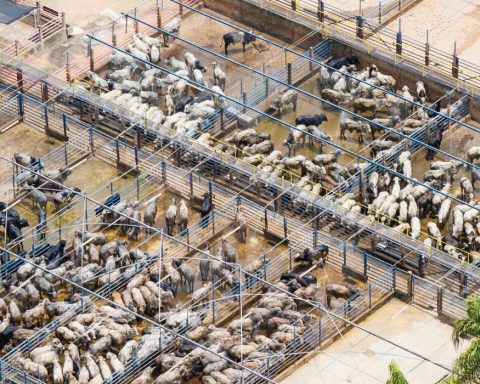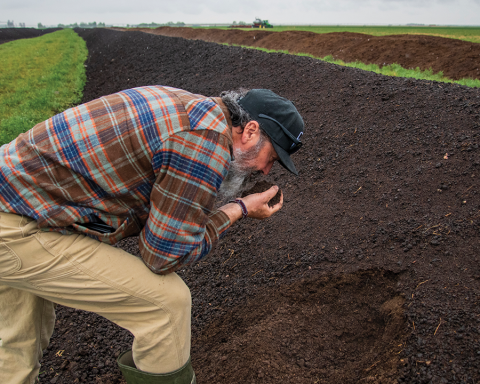Carole Tonello likes to start her day with an energy-boosting juice made from raw kale, cucumber and spinach, but her morning rush doesn’t leave time to prepare it from scratch. Instead, the industrial researcher opts for commercial raw veggie drinks that stay fresh thanks to innovative high pressure processing (HPP), which uses intense pressure at chilled or mild temperatures to preserve food with minimal changes. The catch? The HPP juices aren’t yet available in Spain, where this French biologist lives and works, so she picks them up by the caseload when she visits her U.S. customers for her job at Hiperbaric – a Spain-based designer, manufacturer and marketer of HPP industrial equipment.
Developed commercially in the 1990s, HPP is still in its infancy. But the cold pasteurization technique is on a fast track, says Tonello, because it can boost the shelf life of food products without chemical preservatives while retaining more flavor, nutrients and freshness. Already more than 300 HPP machines are being used in commercial production at 200 companies around the world, processing an estimated 1 billion pounds of food annually, according to Visiongain, a UK business intelligence provider. Avocado products, vegetable and fruit juices, tomato salsa, seafood, meat and salami are among the HPP products now available.
“The problem of HPP, which we are working on now as equipment manufacturers, is that investment and processing costs are higher than the cost of thermal processing [heat-based techniques used in most food processing],” says Tonello, who serves as applications and process development manager at Hiperbaric. The typical HPP treatment cost is 5 to 25 U.S. cents per pound of food, she says.
“Nevertheless, we are improving the technology all the time, with the aim of reducing costs and making HPP more productive and affordable,” so that the resulting food products can be priced comparably with thermally and chemically processed foods. In fact, Tonello’s department has already managed to maintain HPP machine costs while doubling productivity: “So for the same price [it can produce] twice as much as eight years ago,” she says.
Preservation under pressurehigh pressure processing
The HPP process begins with fresh food that has been sealed in flexible, water-resistant packaging and placed in a high-pressure chamber filled with water. “Then a pressure intensifier increases the pressure in the chamber, submitting the food inside the package to about 58,000 to 87,000 psi [pounds per square inch] for a few minutes,” says Tonello, equivalent to the pressure from putting it on the bottom of an ocean 60 kilometers deep, if such an ocean depth existed. “It is a post-packaging process, so it keeps microorganisms out, extends shelf life and inactivates pathogens while at the same time conserves all the nutrients and freshness.
“Pressure is a thermodynamic parameter like temperature,” she adds. “The difference [with HPP] is that there is a very slight increase in temperature but a very large increase in pressure, so it modifies microorganisms by killing them whilst maintaining the chemical and biochemical properties of the food.”
Compared with heat, says Tonello, high pressure has very little effect on a food’s flavor, nutrients and color. HPP is also more environmentally friendly than thermal or chemical processing because it uses recyclable pure water as a transmission fluid, and it is a waste-free process. HPP does consume more energy, but Tonello says researchers are working on reducing the machinery’s carbon footprint.
Consumers can already find HPP guacamole, hummus and dips, Tonello says, but the main HPP products are sliced ready-to-eat meats, chicken strips and organic sausages because the process ensures food safety by inactivating pathogens such as listeria. Fruit and vegetable juices also make up a big part of the current HPP product lineup since demand for them is high, especially in the United States. Dry products like powdered milk, pepper and flour, however, can’t be processed with HPP because their low water content makes it difficult to transmit pressure evenly during the process.
Easier healthy eating
Tonello says the path HPP is following will ultimately lead to better-quality products for consumers who want to eat healthier, such as boosting their fruit and vegetable consumption. “If [consumers] don’t have to peel or squeeze [fresh produce], and they have the juice in a bottle that guarantees the vitamins and nutrients, it will also help the consumer to acquire good eating habits,” she says. “If we give food manufacturers the opportunity to remove chemical preservatives while maintaining nutritional value, there is a clear benefit for the consumer.”
HPP also has the advantage of being perceived favorably by consumers, unlike other novel food processing technologies such as gamma irradiation and pulsed electric light, according to industry research. But Tonello acknowledges that the term “high pressure processing” can be a mouthful.
“We would like to have consumers aware of what HPP is, but the name HPP is a bit abstruse for the consumer,” explains Tonello. One juice company in California, for example, is billing HPP as “cold-pressured,” she says, and “we [Hiperbaric] are thinking of promoting cold pressure technology instead of HPP.”
No matter what the technology ends up being called, Tonello believes that in the next 10 years, developed countries will all adopt HPP for fresher and innovative premium, raw or chemical-free products. “In developing countries, this will take [more] time, because cost is the major parameter [there] concerning a food purchase decision,” she says. “Chilled [transportation and storage] for food is not always available, so freshness is not so important [as] food security.”
This article originally appeared on Future Food 2050







